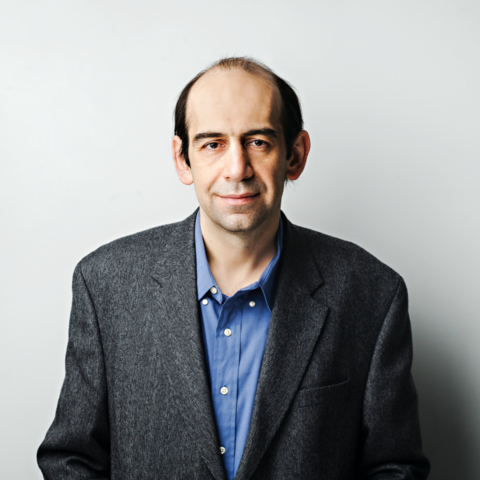At first glance, astrophysics may not seem to have much in common with tracking and predicting the spread of a global virus. But to Professor Niayesh Afshordi, the link was clear – even early last year as our collective reaction to COVID-19 played out in real time.
 As
with
modeling
the
dark
matter
behavior
in
the
Universe,
modeling
the
spread
of
COVID-19
requires
identifying
invisible
drivers
and
interpreting
the
changing
variables
that
our
universe
throws
at
us,
in
the
face
of
uncertainty.
As
with
modeling
the
dark
matter
behavior
in
the
Universe,
modeling
the
spread
of
COVID-19
requires
identifying
invisible
drivers
and
interpreting
the
changing
variables
that
our
universe
throws
at
us,
in
the
face
of
uncertainty.
Before the pandemic, Afshordi, a professor of Physics and Astronomy at the University of Waterloo had plans to start a project with a colleague, Professor Ben Holder from Grand Valley State University, who had just come to Waterloo to spend a sabbatical with Afshordi.
Holder, an expert in modeling within-host virus dynamics, had been planning to transition his work towards black holes. Instead of tackling the mysteries of space-time, however, the pair ended up taking on the mysteries of COVID-19.
“We were eagerly awaiting the data coming out of black hole collisions, and yet what we kept seeing was the deluge of data on exponential growth of epidemic across the world,” said Afshordi. “There were clearly patterns, but the geographic and demographic dynamics that drove these patterns was a mystery that was just too hard to ignore.”
In an effort to understand the changes happening around them, Afshordi and Holder started studying how population distribution contributed to the growth rate during the early epidemic. This project quickly expanded into a multi-disciplinary project as it caught the attention of other collaborators, including two expert data scientists from Wolfram Research Institute, Waterloo philosophy professor Steve Weinstein and a former PhD student of Afshordi’s, Elizabeth Gould (MSc ‘11, PhD ‘18).

The interdisciplinary team went on to develop a sophisticated COVID-19 model that uses not only population distribution, but also age, average household density, regional epidemic history, weather, social mobility in workplaces, mask usage, and the level of vaccination in an area.
Recruiting coop students Shafika Olalekan Koiki, a 2nd year physics and astronomy student, and Jolene Zheng, a 3rd year computer science student, the team was able to create an online portal for interacting with the data and model.
To read more about their project, read the full story on Waterloo News.